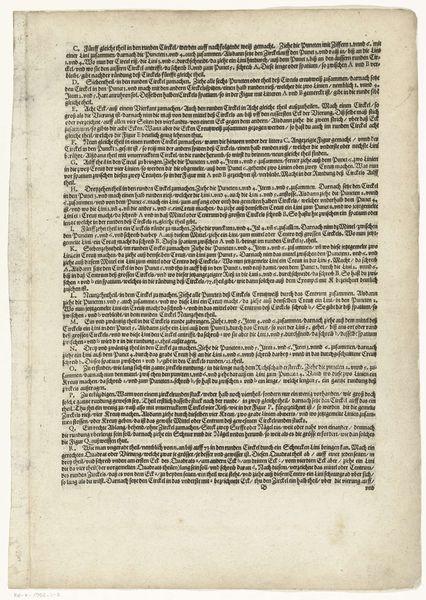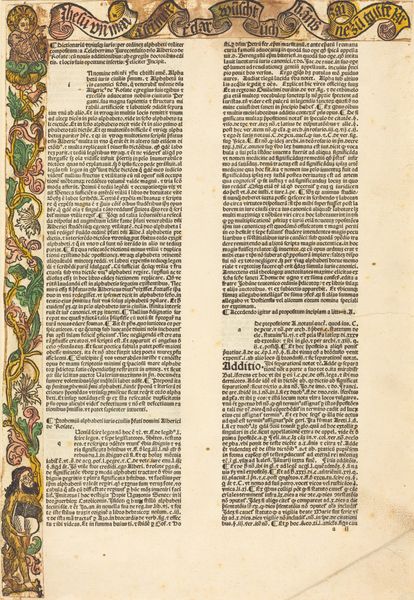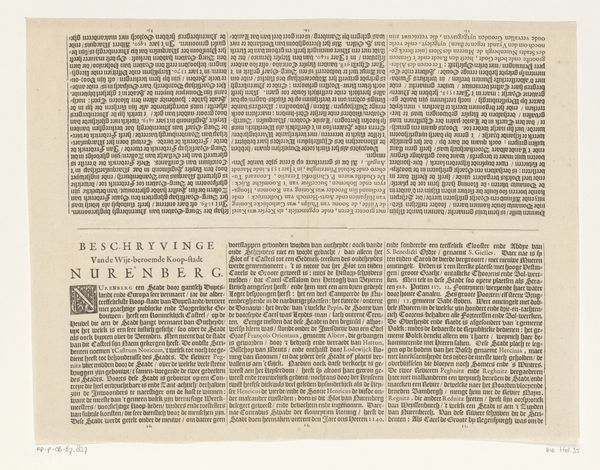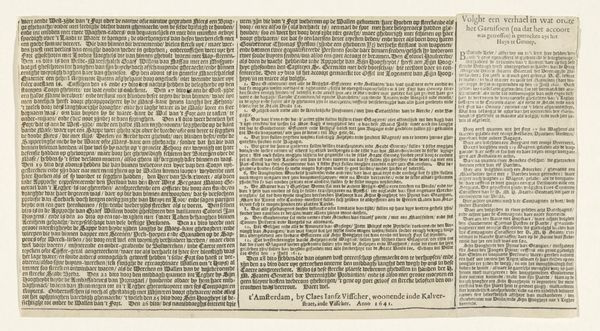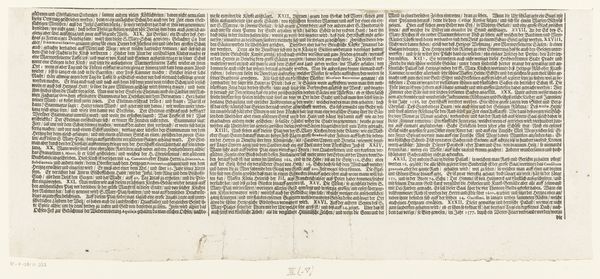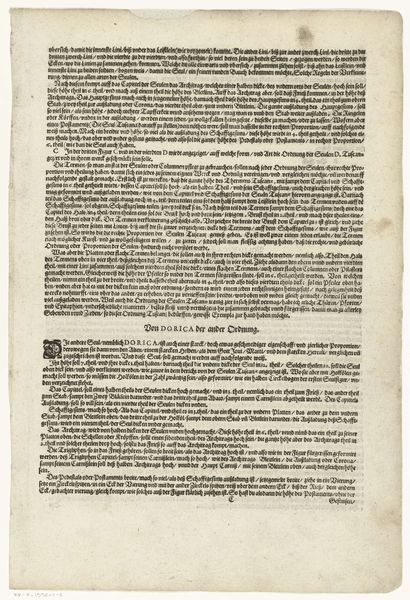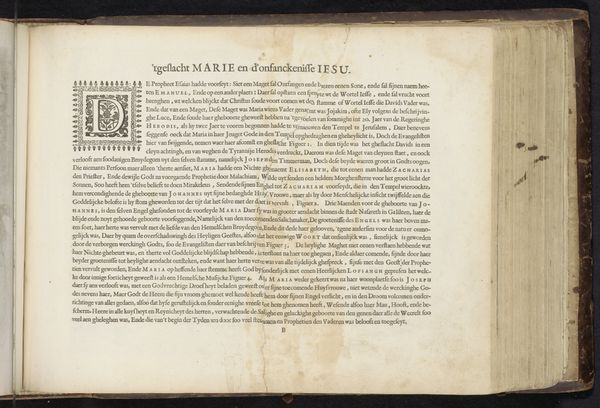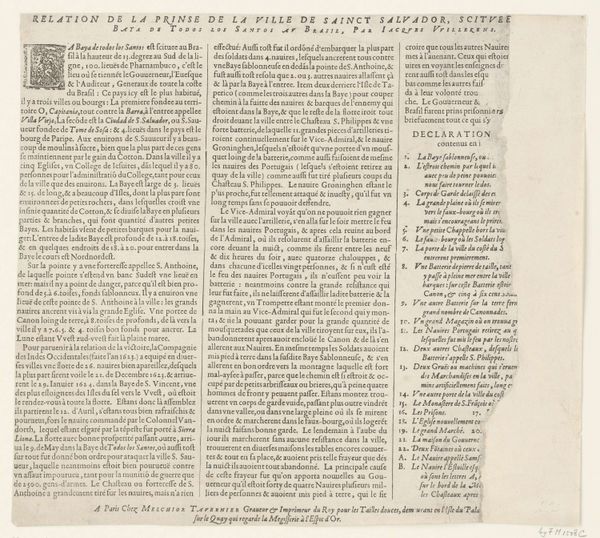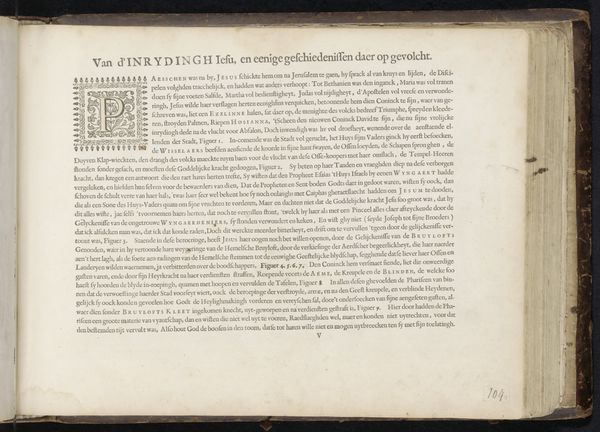
print, textile, paper, typography
# print
#
textile
#
paper
#
11_renaissance
#
typography
#
script
#
stylized text
Dimensions: 12 3/4 × 9 7/16 in. (32.39 × 23.97 cm) (sheet)
Copyright: Public Domain
Curator: Look at the density of this page. This leaf comes from an edition of the Biblia Latina, printed possibly between 1541 and 1543. It's part of the Minneapolis Institute of Art's collection. Editor: My initial reaction is one of complexity, almost overwhelming detail. It's fascinating, like looking at a woven tapestry of words. It feels incredibly tactile, even through a digital image. Curator: That sense of texture makes sense. The leaf itself is a composite artifact. We have paper, of course, but also the impressions of typography, the very physical act of printing leaving its mark. Note the stylized text and the dense, blocky composition. Editor: From a purely structural perspective, the density amplifies the effect. How did socio-political conditions surrounding its creation impact the interpretation? Was access limited, encouraging more reading once a copy was obtained? Curator: Exactly! In that era, printed texts—especially in Latin—held tremendous power. This wasn't just about religious instruction; it was about controlling the narrative, shaping the intellectual landscape. The layout invites focused, close reading – almost demanding that of its audience. Editor: So the museum context inevitably colors its modern reading too, placing it on a pedestal in the modern information landscape that stands at odds with its historic accessibility. I wonder about its original owner—were they fluent in Latin? Curator: A poignant question. Its value shifted as literacy spread, and the authority and purpose of the print became redefined in light of those changes. What meaning do we ascribe now? Editor: Well, to me it signifies the enduring power of words to both illuminate and obfuscate, the material reality of knowledge, and the stories our culture chooses to tell. Curator: A compelling reading, perfectly encapsulating the layers of meaning embedded within this single leaf. A potent artifact.
Comments
minneapolisinstituteofart almost 2 years ago
⋮
By the early 1500s, Bible publishing had become a big, international business. By 1504 in France alone, a new edition came out every year, sometimes as many as four or five. Anton Koberger, Germany’s leading publisher got in on the action by contracting with printers in Lyon to produce editions for him—eight between 1512 and 1522. This leaf of the book of Isaiah comes from one of the editions printed for him by Jacques Sacon, an Italian from the Piedmont region, who worked in Lyon. Their work was so authoritative that Martin Luther used their 1521 edition as the basis for his translation of the Latin Bible into German.
Join the conversation
Join millions of artists and users on Artera today and experience the ultimate creative platform.
